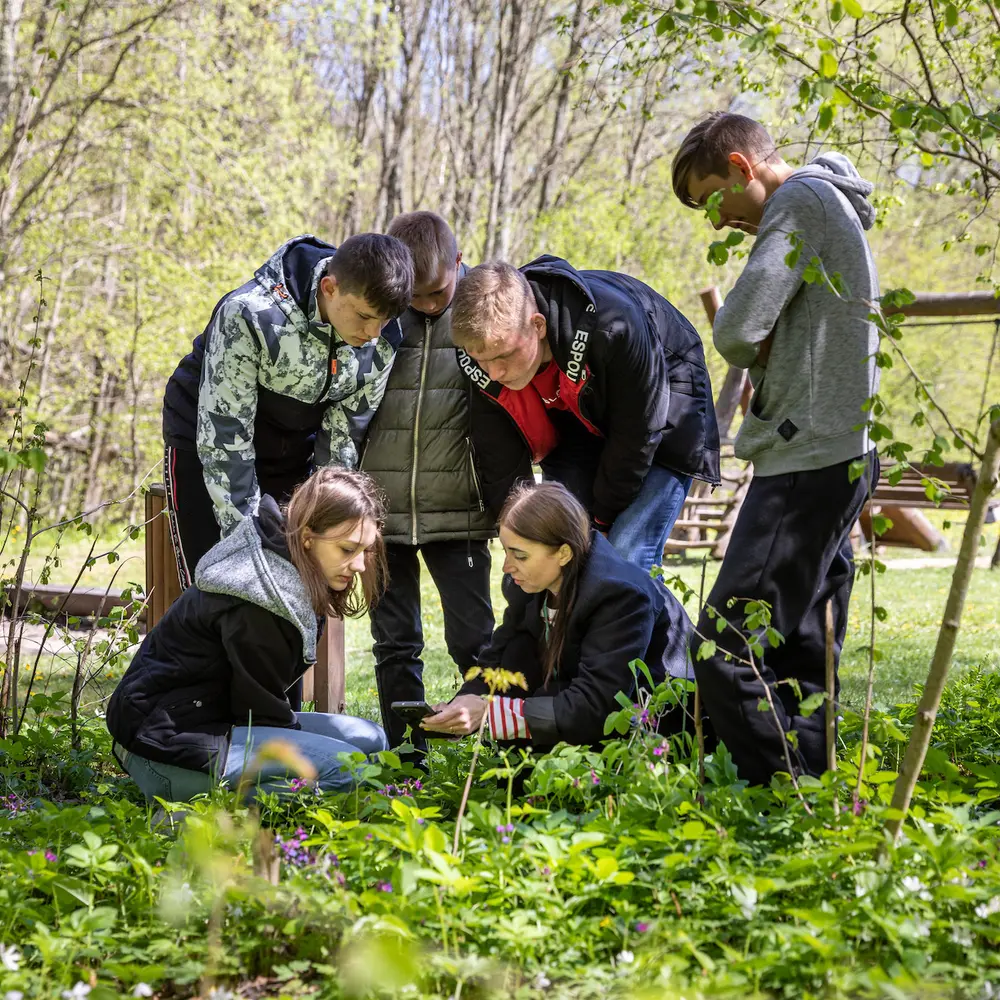Contributed or gifted income is a vital revenue stream that most nonprofits depend on for operations or special projects. In many cases, it is the primary source of income. As a result, a healthy and sustainable fundraising program—known by many other names, including fund development, resource development, and advancement—is central in allowing nonprofits to carry out their missions.
Fundraising programs typically evolve over time as the organization matures. In the beginning, securing gift income happens organically without any identifiable plan, structure, or professional staff. Soon thereafter, the board, executive director, or volunteers formulate and implement activities that support the organization’s basic annual needs. At some point, the organization realizes it lacks the capacity or infrastructure to sustain its growing programs and budget, and it begins to think about hiring professional staff and creating a formal development program.
The key stakeholders for all development programs, regardless of the size of the organization or the maturity of its program, are the board, CEO or executive director, development professional(s), trained volunteers, and others who ensure the organization is visible and well positioned for success. Often, consultants are also team members. Each of these stakeholders plays a role in development:
- Board of Directors: Members should be fully engaged with annual planning and goal setting, personal giving, networking with prospective donors, participating in events, donor solicitations, and “thank you” or stewardship calls. They are the pace-setters.
- CEO or Executive Director: The organization’s leader encourages an active development culture, gives direction, and is involved in development activities, especially with the board and major donors. He or she is always considered to be the chief development officer.
- Vice President/Director of Development/Development Manager or Coordinator/Volunteers: If an organization has a staff member with one of these titles or equivalent responsibilities, he or she supports the board and executive director and leads the program. In smaller organizations, the development manager or coordinator supports the executive director, who leads the overall program. Volunteers are often key members of an organization’s support team as well.
- Others: This group includes program staff, the chief financial officer, and communications and marketing personnel. These staff share in fundraising accountability and must be on board with and supportive of the development activities. Administrative staff or coordinator-level positions also play a role through database management, planning or executing fundraising events, grantwriting, and donor stewardship activities.
- Consultants (paid or volunteer): Experienced, outside voices are essential to train or coach boards and young or inexperienced CEOs/executive directors, create strategies, assist in the hiring process of professional staff, develop reasonable expectations for staff, and help prepare for and execute annual and capital campaigns.
When first establishing a resource development program, an organization would be wise to carefully consider its readiness. Readiness is best determined by asking three questions:
- Is the organization’s leadership (board and CEO/executive director) experienced or knowledgeable enough to lead such an effort?
- Does the organization have a natural donor base and/or network of friends to ensure that it reaches its goals, covers the cost of the new or expanded fundraising program, and also adds value to the organization’s bottom line?
- Has the organization thoughtfully and deliberately accounted for the capacity and systems necessary to support such a program (e.g., support staff, donor database and related technology, guiding principles or policies, etc.)?
Consultants can work with an inexperienced board or CEO/executive director to evaluate the timing of such a decision and make recommendations for how to prepare for the addition of such a program. Consultants also aid in board training, the recruitment of new board members, and setting the expectation of board giving (100 percent should be the goal, with some specific expectation such as, “The organization should be one of each member’s top three giving priorities each year”). Furthermore, consultants can lead an organization through an assessment of an existing donor base, the selection of new staff, the mentoring or onboarding of staff, and the establishment of realistic goals for staff. When setting performance expectations, it is critical that an organization resist the temptation to expect immediate success or measure outcomes against similar organizations whose demographics or circumstances (e.g., organizational history, geographic location, brand recognition, natural donor base, etc.) may be different from its own. In preparation for a campaign, a feasibility study may be in order, and consultants can guide an organization through this task as well. These and other activities help create and nurture a culture of philanthropy within an organization, something that is paramount to success.
When adding the first professional staff member, organizations should not be afraid to start slow with a part- or full-time development manager or coordinator. Volunteers are valuable participants in the fundraising process, too, especially if they are trained and directed. With direction from the CEO/executive director, the organization can put the key elements of a program in place, and a year or two later perhaps the organization will be ready for a calling officer.
Those new to development should focus on these key components, sometimes referred to by other names:
- Case Statement: An organization’s presentation piece for one-on-one interactions with prospective and continuing donors. This statement is written in conjunction with a philosophy of development describing how and why the organization seeks financial support from stakeholders and what benefits or outcomes donors receive when they give.
- Annual Development Plan: A strong annual plan allows organizations to execute their mission and purpose through their budgets and funding goals.
- Segmented Donor List: A key development activity for an organization is to segment its donor list and create unique strategies for each segment.
- Development Team: A core group of organizational leaders involved in developmental planning and execution is an important component of any development strategy.
Whether nonprofits have a long history of soliciting and receiving gifts from major donors or they are just getting started, it is imperative that current and prospective major donors, volunteers, and others who have the potential to give at that level are provided opportunities to directly engage in the organization’s mission. This can include involvement with direct services, program development, strategic planning, or advisory and governance board membership. Those actively engaged with the nonprofit’s ongoing work become vested giving partners more quickly and are more likely to become repeat donors. As development programs mature, they may warrant additional staff to lead major donor efforts or other specialized programs such as corporate and foundation relations, planned giving, and capital or comprehensive campaigns. Of course, these activities are dependent on the existing and potential base of supporters associated with the nonprofit. Organizations should be careful to build these programs deliberately.
In summary, a successful, sustainable, and beneficial resource development program is one that involves an organization’s key stakeholders, includes the four essential development components, is supported with the right infrastructure, and is created with intentionality and a long-term view. Once an organization has an established base of supporters, it can build on its development activities to add a focus on planned giving, major donors, and foundations.
Following is a sampling of questions that the Murdock Trust might ask a nonprofit organization about its development program:
- How involved in development is your board, your executive director, and staff (other than the development director)?
- Do the board and executive director share responsibility for development?
- Is your board of directors allotting time for development thinking and planning in its board meetings? Is the board as a whole a significant donor for the organization? What giving expectations do you have for each board member?
- Does your organization’s technology support your development efforts? Have you invested in a software system that can process gifts, track donors, and monitor donor touches and follow-up communication?
- Do you have a strong case statement, annual plan, segmented donor list, and development team?
- Are your goals tangible, right-sized, and realistic?
- If you have never had a formal development program and are considering adding staff, have you consulted with a knowledgeable fundraising consultant? Considered where potential gifts will come from? Developed realistic goals that pay for the added operational costs and still add value to the organization’s programs? Outlined a plan of action?
- If your organization is mature, are you including a focus on major donors, corporate and foundation relations, and planned giving in your development activities?
- If you are preparing for a capital or comprehensive campaign, have you conducted a feasibility study?
Resources #
Bell, Jeanne and Marla Cornelius. UnderDeveloped: A National Study of Challenges Facing Nonprofit Fundraising. San Francisco, CA: CompassPoint Nonprofit Services and the Evelyn and Walter Haas, Jr. Fund, 2013. Web.
Foley, Eric. Coach Your Champions: The Transformational Giving Approach to Major Donor Fundraising. Colorado Springs: W Publishing, a division of Seoul USA, 2009. Print.
Jeavons, Thomas H. and Rebekah Burch Basinger. Growing Givers’ Hearts: Treating Fundraising as Ministry. San Francisco: Jossey-Bass, a Wiley Imprint, 2000. Print.
Lansdowne, David. Fundraising Realities Every Board Member Must Face: A 1-Hour Crash Course on Raising Major Gifts for Nonprofit Organizations. 2nd Ed. Medfield: Emerson & Church, 2013. Print.
Nouwen, Henri J. M. The Spirituality of Fund-Raising. Nashville: Upper Room Ministries, in partnership with the Henri Nouwen Society, 2004. Print.
Panas, Jerold. Asking: A 59-Minute Guide to Everything Board Members, Volunteers, and Staff Must Know to Secure the Gift. Medfield: Emerson & Church, 2013. Print.
Stroman, M. Kent. Asking About Asking: Mastering the Art of Conversational Fundraising. 2nd Ed. Rancho Santa Margarita: CharityChannel Press, an imprint of CharityChannel LLC, 2014. Print.
Sturtevant, William T. The Artful Journey: Cultivating and Soliciting the Major Gift. Chicago: Institutions Press, 2004. Print.
Wilson, Thomas D. Winning Gifts: Make Your Donors Feel Like Winners. Hoboken: John Wiley & Sons, Inc., 2008. Print.
Photo by Loui Kiær on Unsplash
The post Talking Point: Development and Fundraising appeared first on M. J. Murdock Charitable Trust.







